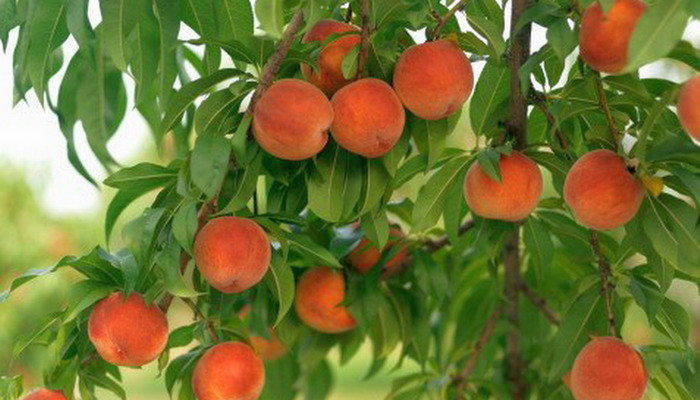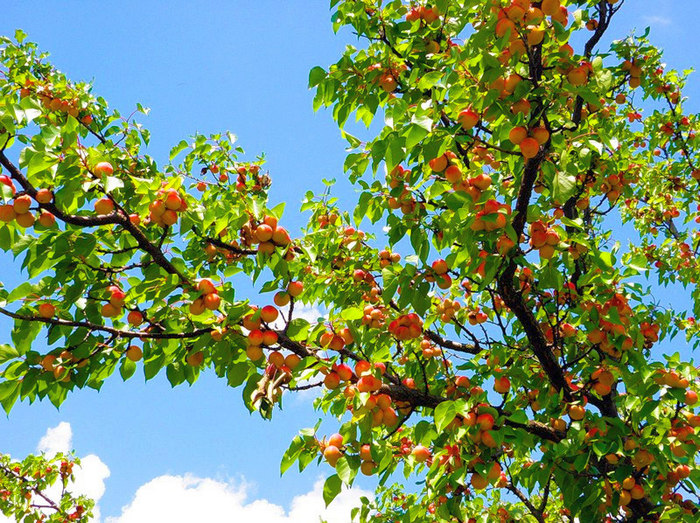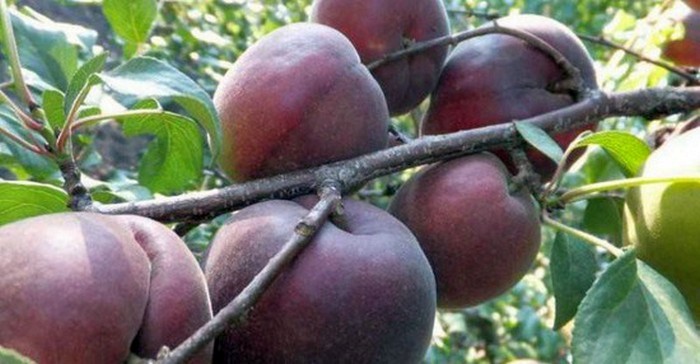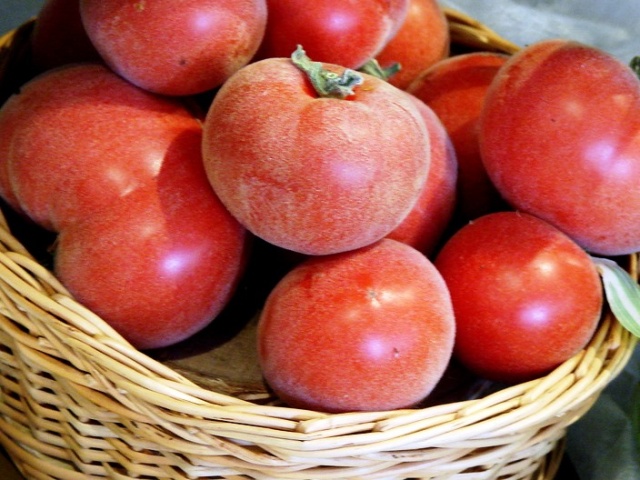Content:
The abundance of fresh fruit is hard to imagine without peaches and apricots. Popular in the summer, they are among the most common products on store shelves. Despite the apparent similarity of the fruits, peaches and apricots can be distinguished by many differences.
Peach and apricot are widespread mainly in the southern regions of Russia, since the plants do not have good frost resistance. Apricot belongs to the genus Plum of the Rosaceae family. Thanks to the work of breeders, several varieties of apricots suitable for the middle strip have been bred:
- Hardy - has oval golden fruits with a characteristic blush. Up to 80 kg of harvest can be harvested from one tree;
- Apricot Peach Is a high-yielding variety. Fruits - 40-50 g, round, bumpy, with a slight depression. Description Peach apricot variety is characterized by pineapple pulp aroma;
- Orlovchanin - ovoid yellow fruits with a carmine red blush. They have good winter hardiness.
The first difference between a peach and an apricot is that it is a representative of the Almond genus. The most famous subspecies:
- Potanin's peach - belongs to inedible wild varieties, grows in the wild in China;
- Guan peach - small fruits with tough pulp have an unattractive taste. The species is used as a basis for breeding new varieties, transferring them immunity to frost and resistance to diseases;
- Kiev early - differs in unpretentiousness to the surrounding conditions, bears fruit with elongated pale yellow fruits, the average weight of which is 100 g;
- friendship - frost-resistant variety, gives rounded yellowish-creamy fruits weighing 150-250 g.
Origin story
According to one of the most common versions, China is considered the birthplace of apricot. Having spread throughout Central Asia, it was brought to the territory of Iran and Armenia. Approximately 2000 years ago, from Armenia it came to Ancient Greece, where it received the name “Armenian apple”. After Greece, it gained popularity in Ancient Rome, known as “Armenian plum”. In Russia, it became widespread in the southern regions: Krasnodar, Rostov-on-Don and the North Caucasus.
The exact origin of the peach has not yet been established. According to one version, Iran is considered the homeland. They associate this with the name itself, because Iran was called Persia earlier. Another theory is of Chinese origin. Also, wild peach species were recorded in Tibet, which formed the basis for the third version of the origin.
Differences between trees
In the presence of external similarities, peach and apricot trees have their own characteristics.
The sizes of the apricot tree are varied. There are both low-growing bush-like trees and trees, whose height reaches 12 meters. The trunk of the trees is strong, 30-60 cm in diameter. The color of the bark of young shoots varies from reddish brown to brownish olive. The bark of perennial branches is usually brownish brown. A sprawling dense crown gives the tree a three-dimensional appearance. The crown shape can be round or flat. The root system develops deep into the soil layer. It is a developed core with lateral roots extending from it. Growing, the root system is 2 times the diameter of the crown.
This feature imposes restrictions on the choice of landing site.Leaves are light green, ovoid, fall off in autumn. Blooms with a characteristic aroma. The flower cups are small, fused, reddish outside, light green inside. The corolla of the flowers is pink or white and consists of 5 petals. Stamens, as a rule, 20-30 pieces, are placed in several rows.
Peach trees are medium in size, reaching a height of 4 meters. The crown diameter is 1.5 times the height of the tree. The crown is formed by skeletal branches located at a large angle from the main trunk. The bark is a red-brown scale; it appears in young shoots with age. The leaves are lanceolate with a fine serrated edge. Glossy bright green leaf blade pubescent along the central vein. There are pink or red flowers, sessile. Peach blooms in the second decade of April, before the leaves open. It does not have self-fertility - a peach needs several other varieties to be planted nearby for pollination. There is a difference between peach and apricot in root structure. The root system is located at the level of 60-70 cm from the soil surface. Therefore, plants need abundant watering.
Fruit differences
Apricot fruits are of the drupe type, their diameter ranges from 30-60 mm. They are distinguished by size: small, medium, large and maxi fruits. The shape ranges from round to elliptical. The skin is velvety to the touch, thin, slightly drooping. The shade of the skin is characteristic of each variety separately, it can be white, orange, yellow or orange-red, there may also be a reddish blush. The pulp is juicy, fleshy with an imperceptible sourness. The stone takes up to 1/4 of the fruit. A pointed rib is located along the dorsal seam, 2 lateral ribs are less pronounced. Basically, the color is brown, it can have a different shade, depending on the variety. White seed can be both sweet and bitter.
Like the apricot, the peach fruit is a drupe. The flesh covering the pit varies in color from white to light orange. The external form has various manifestations: round, elongated, ovoid, flattened, with a pointed tip. The skin is thin, it can be pubescent or bare (such fruits are called plum). Skin color from light green to yellow-orange with a red blush. The stone is strong, with a woody coating, contains, as a rule, bitter seed.
Peach and apricot hybrids
Crossing peach and apricot leads to the emergence of new hybrids, whose characteristics exceed the original. The most common hybrids are:
- sharafuga - the result of hybridization of peach, apricot and plum;
- nectarine - crossed apple or plum trees with peach;
- tent - a hybrid variety of plum with cherry plum;
- plumkot - a cross between plum and apricot;
- mainor - a combination of plum and cherry;
- picherin is a hybrid of nectarine with peach.
The incomparable advantages of such hybrids are high taste and early periods of onset of fruiting (in the 2nd year). However, a combination of 2 or more plants shortens the lifespan of the hybrids to 4 years.
Distinctive features of apricot crossed with peach:
- an adult tree is 2-3 m in size;
- peach leaves, tapering towards the end;
- bears fruit for 10 years;
- fruit color is typical of apricot, size - peach.
Features of agricultural technology sharafuga
Sharafuga is frost-resistant, outwardly similar to the plum with dark purple fruits, leaves and thorns. The shape and size of the fruit is more like an apricot. The pulp tastes like a mixture of plum and apricot aromas. In this case, the stone has a characteristic peach appearance. The tree loves well-lit areas, sheltered from cold winds. The hybrid is picky about soil fertility. In the case of scarce land, it is necessary to regularly apply humus, superphosphate and potash fertilizers. There should be at least 4-5 m between adjacent plants.The main advantage of the sharafuga is its frost resistance, the tree easily tolerates a temperature drop down to -25 ° C.
For proper watering in the near-stem circle, dig a groove, this will help to distribute moisture over the entire diameter of the root system. Throughout the summer cottage, you need to feed the tree:
- in the spring - nitrogen fertilizers;
- in summer - potash, nitrogen, - and phosphorus-containing fertilizers;
- in the fall - humus and potassium sulfate and superphosphate.
Pest control and prevention
Despite the immunity obtained during breeding, the sharafuga can be attacked by pests, for example, moths, aphids, thrips.
To combat parasites, you must:
- cut off infected shoots;
- burn fallen leaves;
- treat the tree with insecticides, fungicides.
To prevent the appearance of pests, plants can be sprayed with solutions of folk recipes based on onion, garlic peels and soap.
In conclusion, we can say that both apricot and peach have their own distinctive features, both in the external structure and in the taste of the fruit. Existing hybrids of these species carry valuable qualities. The most popular hybrid is a scarfuga, due to its high resistance to frost, it allows the culture to be spread throughout the northern territories. However, when the genotypes of several species are combined, the lifespan of new varieties is significantly reduced. For both parent varieties and hybrids, it is important to observe seasonal fertilization and irrigation. The correct agronomic techniques will allow you to enjoy a bountiful harvest of sweet fruits.

















